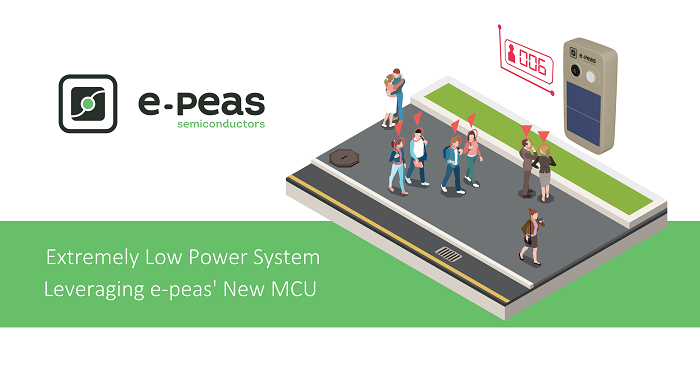Acknowledged pioneer in power technology for energy harvesting, e-peas will be showcasing its latest engineering advances at this year’s CES event, and illustrating how they can be applied to real-world scenarios. As well as featuring some of the highly efficient energy harvesting ICs from e-peas’ award-winning AEM series, the company’s new EDMS microcontroller unit (MCU) will also be demonstrated.
Visitors to the e-peas booth at CES (#61225) will be able to see a complete ultra-low-power system deployment in action. The energy-autonomous surveillance system on display will rely on energy harvesting to meet all its power requirements. It may be used for people counting and facial recognition purposes (accessing stored data to confirm individuals’ identities).
To power itself, the system relies on the AEM10941 PMIC, which is designed specifically for energy harvesting power management in solar-oriented implementations, plus the AEM30940 PMIC, which is intended for RF-based energy harvesting work.
At the heart of this demonstration will be the game-changing EDMS105N MCU, which e-peas is due to start sampling very soon. This 32-bit device is based on ARM Cortex-M0 architecture and is optimized for operation in situations where there are minimal available power reserves – such as industrial IoT, building automation, and smart city implementations.
Further e-peas innovations are highlighted in relation to both the image sensor and the RF energy harvesting antenna employed.
“Our CES demonstration will give us the opportunity to provide an international audience with more details on the full breadth of our product offering, as it continues to expand and develop,” states Geoffroy Gosset, CEO, and co-founder of e-peas. “It will underline our capacity to serve the market with comprehensive solutions for battery-free infrastructure, covering not only the power management but also the data processing and sensing aspects. This signifies another important step in e-peas’ progression as the leader in energy-autonomous edge processing and sensing applications.”






